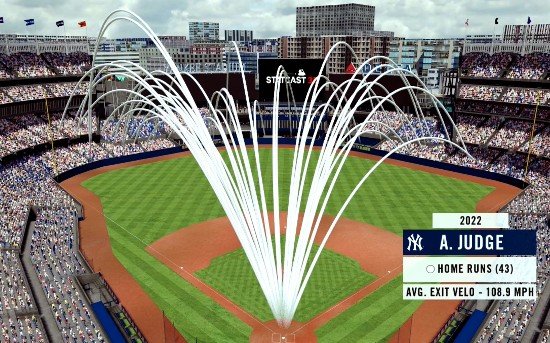I am a huge fan of baseball and have been all my life. I remember the Brooklyn Dodgers, a team I followed closely, picking up and moving to Los Angeles. Brooklyn was the parent club to the Montreal Royals, a team in the International League that was located in my hometown back then. I continue to follow the Dodgers even in LaLa Land. But today I mostly am a Toronto Blue Jays fan, and today is the season home opener.
I remember how hard it was to break Babe Ruth’s home run record of 60 in 154 games. That number stood the test of time until Roger Maris broke it with 61 in 1961. Maris did it in an extended 162-game season. Since Maris, others have surpassed 60 as well with the current record of 73 accomplished by Barry Bonds in baseball’s notorious “steroid-enhanced” era. That was done in 2001.
Over the years, the makeup of the baseball has purportedly changed although Major League Baseball denies this. An altered baseball was blamed for “the dead-ball era,” when too few home runs were hit. Now climate change is being cited as a home run performance enhancer.
A study at Dartmouth College claims that reduced air density caused by warmer temperatures is likely responsible for an additional 500 home runs above average since 2010. The study goes on to project an increase of 10% in home runs because of global warming by 2100.
Dartmouth has given this new baseball era the name “climate ball.” Their research was published on April 7, 2023, in the Bulletin of the American Meteorological Society. The research compiled data from 100,000 Major League Baseball games between 1962 and 2019, and 220,000 batted balls between 2015 and 2019 to come up with the hypothesis that global warming is changing how the ball takes flight attributable to reduced “gametime air density.” The study also notes that “without gameplay adaptations, future warming will intensify this effect alongside other climate impacts.”
The most recent surge in home runs per game occurred between 2015 and 2019. No steroids or doctored balls are involved. It’s all about changes to game-time temperatures. Past research has noted a correlation between the distance a baseball travels and gameday temperatures. But linking the increase in the number of home runs directly to rising temperatures meant having to rule out other potential associations. For instance, many new stadiums have been built in recent decades. Outfield dimensions have been altered, sometimes to make ballparks more pitcher or hitter-friendly. Many new ballparks have retractable roofs which change the airflow dynamics. Here in Toronto, the Rogers Centre, formerly known as Skydome, was the first of its kind to have a retractable roof.
The Dartmouth study only looked at open-air and retractable-roof stadiums. A 1 Celsius (1.8 Fahrenheit) increase in daytime temperature translates to a 1.96% increase in home runs. In terms of game time temperatures such as those played in the afternoon, the effect is larger with an increase of 2.4% while with night games 1.7%. Insignificant changes were noted in homerun statistics where stadiums were closed. There was nothing of note to separate home and away teams in terms of home runs hit under these varying conditions.
Other variables that the study mentions include warmer temperatures and the potential heat stress that can happen to pitchers. Could that be contributing factor to increased home runs? Can air density and temperature affect bat or pitch speeds?
Statcast data does show that the average increase in the number of fly balls per game correlates to the uptick in home runs. Right now the difference is small. But as atmospheric temperatures rise through the rest of the century the changes to air density that will also occur will produce more home runs. And each degree of atmospheric warming, states the study, will lead to approximately 95 additional home runs per season.
If all-day games were to be converted to night games, the number of additional home runs per season would be smaller. A season of only night games would cut the number by 15%. Adding more domes to stadiums would reduce the number further. Today, domed stadiums experience produce less than half of the home run totals seen in open stadiums.
And finally, the study cannot deal with all human factors including player conditioning changes, and altered pitching and defence strategies. Today’s top pitchers are consistently cracking 100-mile-per-hour speeds. Well-hit balls that come at you at 100 are likely to leave the bat at even greater speeds. And batters these days seem to be reaching for the fences with the angle of their swings, so it all adds up to an upswing in homerun counts.
I think this hypothesis needs further experimentation and greater parsing of the data to definitively be proven. What I like about it, however, is that it brings climate change into a baseball discussion, and maybe that gets more people aware of the unintended consequences of putting more greenhouse gasses into the atmosphere.
















